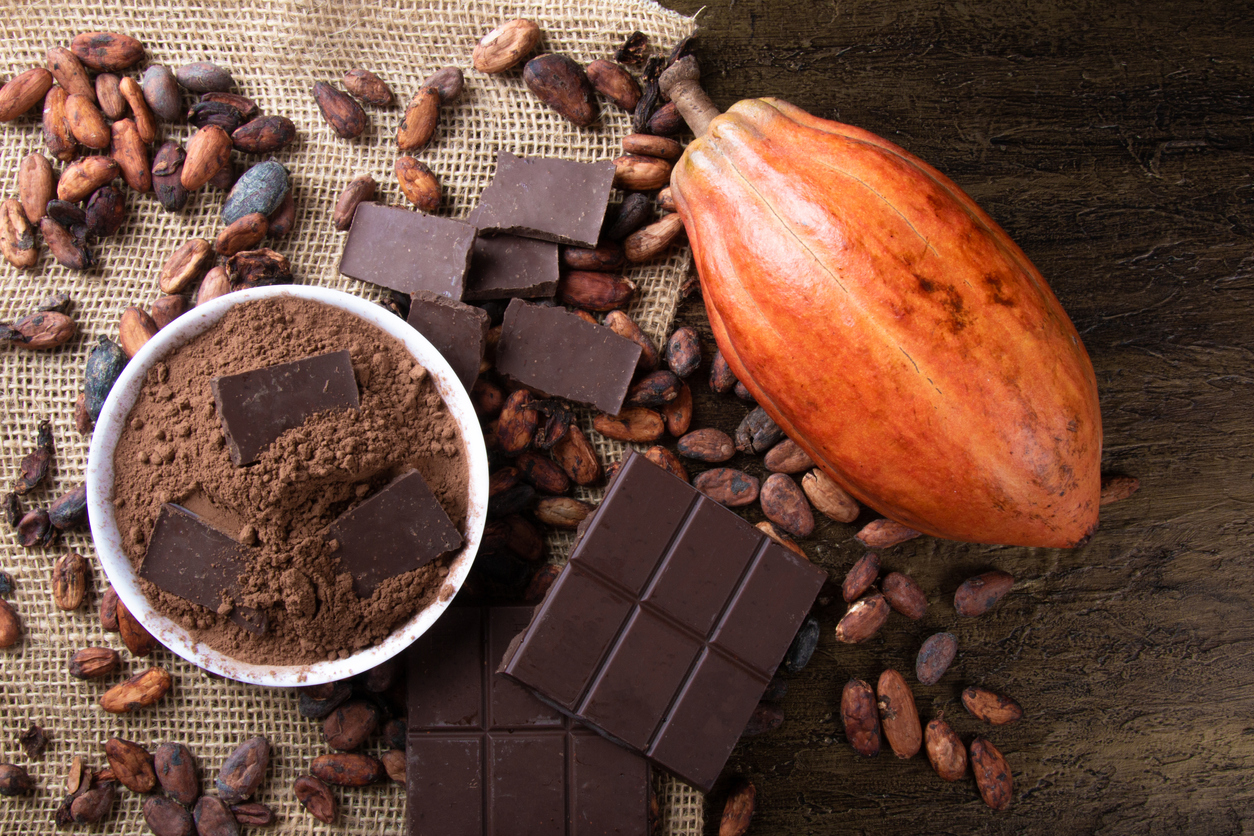How to buy and export Cocoa Beans from Kenya
How to Buy and Export Cocoa Beans from Kenya
Cocoa beans are used to make chocolate. Also known as the “The Gold of the Earth”, cocoa is the second most important cash crop in the world after oil seeds. The production of cocoa beans is known as the “food of the gods” because theobromine, an alkaloid found in chocolate is a stimulant that increases alertness, mood and self-control.
However, you probably were not aware that the amazing aroma of chocolate is derived from the flowers of the Theobroma cacao tree. These beans are the only part of the Theobroma cacao tree that is grown commercially. The beans are grown in specific geographic areas known as cocoa farms or plantations. Depending on the quality of the soil, varying climates and the care given to the trees on these farms, the exact type of cocoa bean produced will vary.
Cocoa beans are harvested at different stages of maturity. The first phase of the harvest is referred to as “breaking” or “fattering”. It is a period where the beans are dried off before they are processed. Afterwards, they are known as “cocoa nibs” or “nibs”. A third phase is known as “sacking”. Finally, the beans are graded and packaged for export. However, not all of these stages are available in all countries.
CLICK TO BROWSE ALL OUR COCOA PRODUCTS
How to Buy Cocoa Beans
Cocoa beans are sold in bags of 50 or 100 beans. Most supermarkets and specialty stores will sell cocoa beans. However, if you are interested in buying bulk cocoa beans, your best bet is to find a local grocery store or online retailer. These businesses will usually have large bulk quantities of cocoa beans available for purchase.
To prepare cocoa beans for consumption, they are first fermented. Cocoa beans are fermented to remove the bitter taste of the plant. Fermentation takes about a month, depending on the climate and the type of beans. The fermentation process is actually pretty simple. Fermenting cocoa beans simply involves placing the beans in an environment with a high level of humidity. The ideal humidity for cocoa beans is between 80 and 90 percent. Moisture is essential for the fermentation process. If the beans are too dry, they will not ferment properly. Too much moisture, however, will lead to mold growth. To reduce the risk of mold growth, it is best to ferment cocoa beans in a container that has a lid. You don’t want any cross-contamination between different types of beans or any mold spores to enter your container. You also don’t want microbes present in your container to enter the beans. To ferment cocoa beans, you can use a food dehydrator, a refrigerator or a clean, airtight container with a lid.
Export Cocoa Beans from Kenya
While still an emerging market, exporters from Kenya are noticing a strong trend upwards in interest in their authentic cocoa beans. Demand for cocoa beans from Kenya is increasing. This is especially true in the European Union where the EU is now the largest importer of cocoa beans. Agricultural commodity traders from the EU are investing heavily in cocoa farms in the African nation. This is causing a significant rise in the price of cocoa beans from Kenya.
How to Export Cocoa Beans from Kenya
There are different export certification methods for exporting cocoa beans from Kenya. You can export cocoa beans according to the Kenya Cocoa Board Scheme (KCBS). This scheme is the most common method of exporting cocoa beans from Kenya. The KCBS is a government scheme that was implemented in the early 1900’s to regulate and monitor the export of cocoa beans. According to the scheme, you must export cocoa beans to a government-approved exporter. You will then have to pass the beans through a government-approved verifier. Finally, the beans must be exported through a government-approved export agent. You can also export cocoa beans according to the EU’s system of certification. This system is modeled after the EU’s system of certification for citrus fruit and coffee.
Brazil is the largest producer of cocoa beans
The largest producer of cocoa beans is Brazil. According to the World Cocoa Foundation, Brazil produces around 70% of the world’s cocoa beans. The country also accounts for close to half of the world’s cocoa plantation. The two most significant cocoa growing regions of Brazil are the Amazon region and the Cerrado region. The Cerrado region is known as the breadbasket of Brazil. The Amazon region primarily produces cocoa beans for commercial purposes. The Amazon region also produces cocoa for pharmaceutical and chemical companies.
Nigeria is the largest importer of cocoa beans
Nigeria is the world’s fifth largest importer of cocoa beans. This is largely due to the fact that Nigeria is the largest consumer of cocoa beans in the world. The country imports around 20% of its annual consumption of cocoa beans from abroad. Like other cocoa-consuming countries in West Africa, Nigeria becomes a large importer of cocoa beans because the country has a relatively small domestic cocoa bean farming sector. The country also heavily relies on cocoa beans for its survival. According to the World Cocoa Foundation, half of the food consumed in Nigeria comes from cocoa beans. The country’s food security depends on the availability of affordable and quality cocoa beans.
Cocoa Butter is the Key Ingredient in Chocolate
Cocoa butter, is the key ingredient in chocolate. Cocoa butter is an oily substance that has a bitter-sweet taste. Cocoa beans are fermented to remove the bitter taste of the plant. Fermentation takes about a month, depending on the climate and the type of beans. The fermentation process is actually pretty simple. Fermenting cocoa beans simply involves placing the beans in an environment with a high level of humidity. The ideal humidity for cocoa beans is between 80 and 90 percent.
Cocoa beans are harvested at different stages of maturity. The first phase of the harvest is referred to as “breaking” or “fattering”. It is a period where the beans are dried off before they are processed. Afterwards, they are known as “cocoa nibs” or “nibs”. A third phase is known as “sacking”. Finally, the beans are graded and packaged for export.
Tips for Exporting Cocoa Beans from Kenya
– Invest in quality packaging to protect your beans from damage in transit.
– Inspect your containers for any signs of leakage or damage.
– Pack your beans securely in the containers.
– Know the transit requirements for your shipment.
– Make sure your consignee is aware of the estimated arrival date.
– Keep track of the estimated arrival time of your shipment.
– Have an accurate delivery time estimate.
– Keep your contact information up to date.
– Make sure your exporter is registered.
Final Words: Is it worth it to export cocoa beans from Kenya?
Yes! Cocoa beans from Kenya are high quality, flavorful and aromatic. They make a great gift for any occasion. This chocolate-producing nation is ripe for growth. With its rich tropical climate and soil, cocoa beans from Kenya are well-suited for farming. With the right export strategy, you can increase your revenue and profit margin. The steps for exporting cocoa beans from Kenya are as follows:
Conduct a thorough market analysis for the target market.
Gather information about the type of product you want to export, the quality of your product and the price you want to sell it for.
Select the route you want to use. It could be air, sea or land.
Register as a business exporting goods.
File your exporting license with the customs authorities.
Ship your goods to the port of departure.
Review the delivery timeline to see when your shipment should arrive.
Provide the customs authorities with the necessary paperwork.
Export quality cocoa beans from Kenya.








LEAVE A COMMENT
You must be logged in to post a comment.